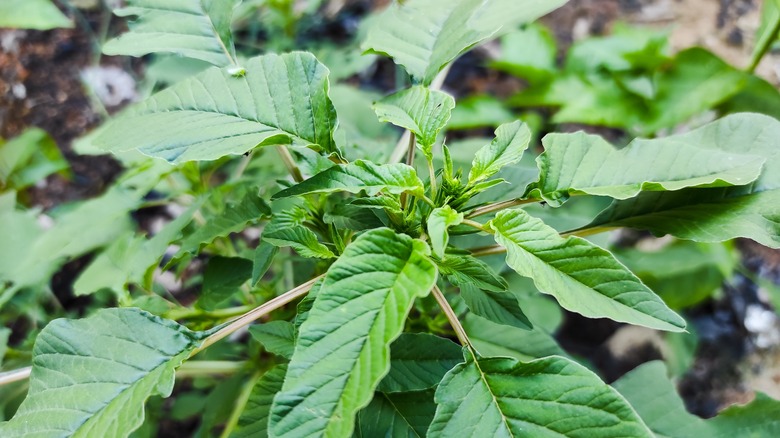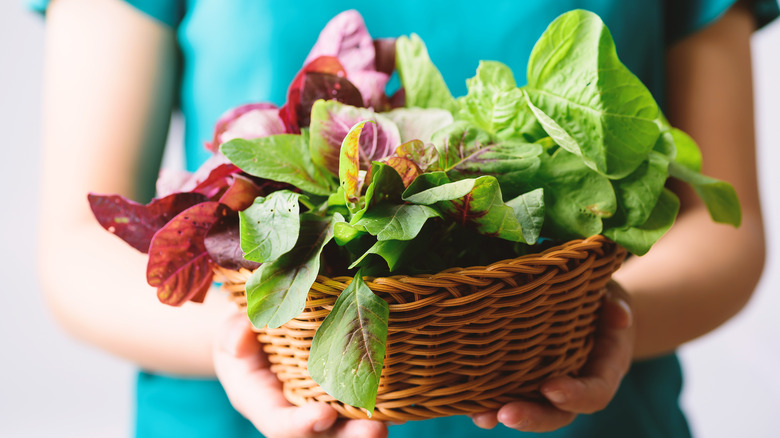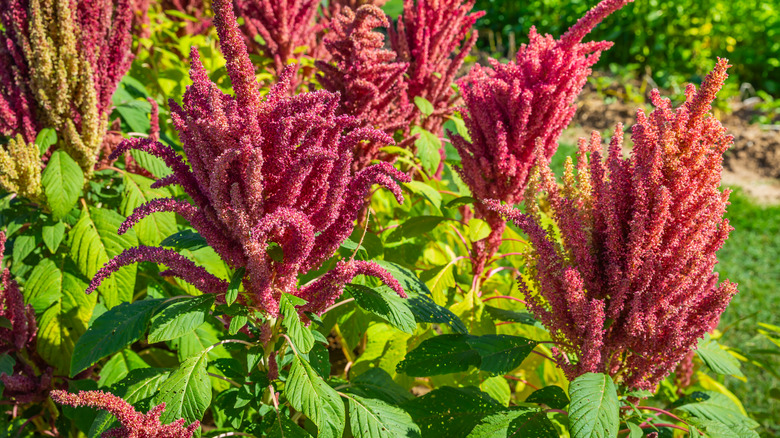What Is Callaloo And Should You Add It To Your Garden?
Callaloo is a plant that goes by many names with even more uses. While you may think you've never heard of this Caribbean vegetable, you may know it by the name more commonly used in the U.S.: amaranth. This family of plants consists of around 70 species, some of which are grown as ornamentals, while others are primarily grown to eat. You may have seen amaranth seeds as an edible grain alternative, but callaloo refers to the tender, spinach-like green leaves of this plant. The seeds of callaloo are very prolific and may determine whether you want to add it to your garden.
The callaloo plant grows quickly, with some giant species reaching over 8 feet tall. If you're considering adding this prolific vegetable to your garden, you will want to make sure you select a species that produces the best leaves over those developed as ornamentals. It is also important to note that some wild amaranth species are considered invasive, including A. palmeri, which has become a problem in large-scale agriculture. Check with your local extension office to help you grow a gorgeous (and invasive-free!) garden.
Growing callaloo for the tastiest harvest
Although you could technically eat the leaves of any amaranth, the tastiest options will come from those specifically sold as callaloo. Fruition Seeds suggests their Jamaican callaloo cultivar which, as the name implies, is intended to be grown for its leaves rather than ornamental blooms that produce the grain-like seeds. The good news is, even the varieties that aren't specifically grown for their beauty still make a gorgeous addition to the garden when the blooms open, supporting pollinators and adding textural interest to the space. Once the flowers open, the flavor of callaloo leaves will turn bitter, so practicing succession planting to make the most of your garden space can ensure you have a consistent harvest throughout the season.
One of the best things about growing callaloo — besides the harvest, of course — is that it is not picky about soil conditions. This plant will grow in fertile raised beds as well as lean soil in the ground. It will tolerate drought, but it won't like soggy conditions. Place your callaloo in a sunny spot and enjoy one of the few leafy greens that stay tender in the heat, unlike when your home-grown lettuce tastes bitter.
Keeping callaloo from taking over you garden
The key to keeping callaloo from taking over your whole garden is removing the blooms before the seeds have a chance to mature to prevent the plant from reseeding — and reseed it will! One plant can produce thousands of seeds, depending on the variety. With all those seeds produced by one little plant, you can see how it can quickly get out of control.
The good news is you can trim off the stunning seed heads before the seeds have time to develop and use them in floral arrangements. As we mentioned, even non-ornamental varieties provide gorgeous strands of tiny blooms, so you can prevent an invasion of callaloo while adding beauty to your home. Just be sure to remove all blooms before the flowers dry. If you happen to forget to remove those flowers, you may have to deal with a lot of seedlings next year, but not all will sprout because wild birds will happily make a meal out of the dry seeds over the winter.



